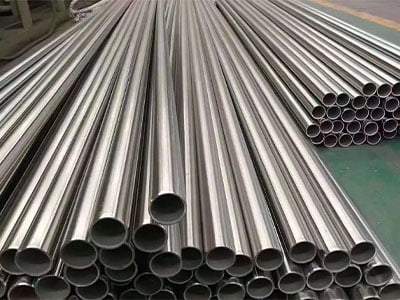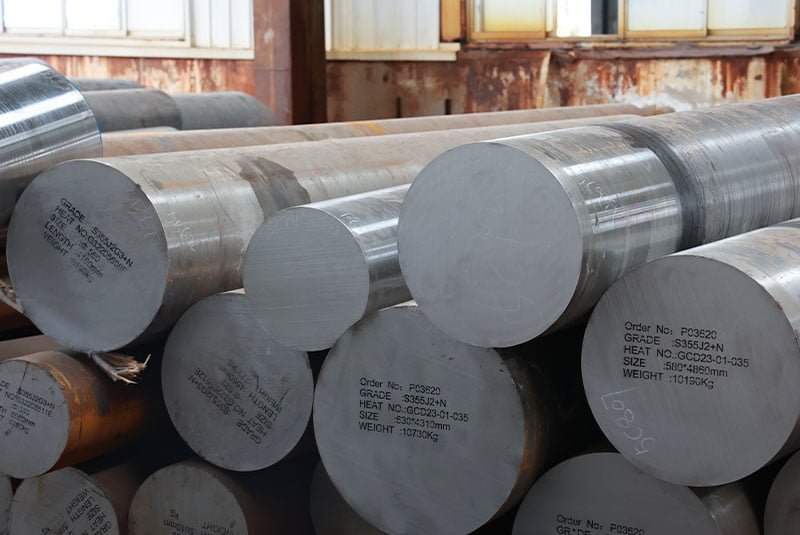Introduction

When discussing high-strength alloys, 4340 steel is frequently highlighted due to its remarkable properties and versatile applications. The 4340 chemical composition plays a pivotal role in determining these characteristics. In this article, we delve into the intricate details of the 4340 chemical composition, exploring its elements, their proportions, and the impact they have on the steel’s properties.
What is 4340 Steel?
4340 steel is a high-strength, low-alloy steel known for its exceptional toughness, strength, and wear resistance. This alloy belongs to the family of low-alloy steels that are characterized by a high content of nickel, chromium, and molybdenum, which provide it with enhanced mechanical properties.
Composition and Structure
The chemical composition of 4340 steel is meticulously formulated to achieve a fine balance of various elements. The primary components include:
- Carbon (0.38% – 0.43%): Provides hardness and strength, which are critical for the alloy’s performance in demanding applications.
- Manganese (0.60% – 0.80%): Improves hardenability and tensile strength, contributing to the overall durability of the steel.
- Nickel (1.65% – 2.00%): Enhances toughness and impact resistance, making the steel suitable for high-stress environments.
- Chromium (0.70% – 0.90%): Increases hardness and tensile strength while offering some degree of corrosion resistance.
- Molybdenum (0.20% – 0.30%): Adds to the steel’s strength and toughness at high temperatures, also improving hardenability and wear resistance.
Mechanical Properties
The unique combination of these elements results in 4340 steel’s outstanding mechanical properties. It exhibits high tensile strength, excellent toughness, and good ductility, making it capable of withstanding significant stress and strain. Additionally, 4340 steel demonstrates excellent fatigue resistance, which is crucial for components subjected to cyclic loading.
Heat Treatment and Customization
One of the key advantages of 4340 steel is its excellent response to heat treatment. Through processes such as annealing, quenching, and tempering, the mechanical properties of the steel can be further enhanced and tailored to meet specific requirements. This adaptability makes 4340 steel a preferred choice for applications where precise mechanical characteristics are essential.
Applications
The robust properties of 4340 steel make it an ideal material for various high-performance applications. It is extensively used in the aerospace industry for manufacturing landing gear, as well as in the automotive sector for crankshafts and connecting rods. Additionally, it is employed in the production of heavy-duty gears, oil and gas industry components, and other critical parts that demand superior strength and durability.
Versatility
4340 steel’s versatility extends beyond its mechanical properties. It can be machined into complex shapes and is weldable under certain conditions, although preheating and post-weld heat treatment are often recommended to prevent cracking. Its ability to be customized through heat treatment and its robust performance in harsh environments make it a valuable material across various industries.
Detailed Analysis of 4340 Chemical Composition
Carbon (C)
Carbon is a crucial element in all steel compositions, and in 4340 steel, it ranges from 0.38% to 0.43%. This element is vital for providing hardness and strength. The carbon content in 4340 steel ensures a good balance between toughness and wear resistance.
Manganese (Mn)
Manganese content in 4340 steel varies from 0.60% to 0.80%. This element improves the hardenability and tensile strength of the steel. Manganese also contributes to the steel’s resistance to wear and tear, making it more durable.
Nickel (Ni)
Nickel, present in amounts ranging from 1.65% to 2.00%, enhances the toughness and impact resistance of 4340 steel. It also contributes to the alloy’s strength, making it an essential component of the 4340 chemical composition.
Chromium (Cr)
Chromium content ranges from 0.70% to 0.90% in 4340 steel. Chromium increases the hardness, tensile strength, and toughness of the steel. It also improves corrosion resistance, which is critical for applications in harsh environments.
Molybdenum (Mo)
Molybdenum, present at 0.20% to 0.30%, enhances the strength and toughness of 4340 steel at high temperatures. It also improves the hardenability and wear resistance of the alloy, ensuring its reliability in high-stress applications.
Other Elements
Small amounts of silicon, phosphorus, and sulfur are also present in 4340 steel. These elements are kept to a minimum to avoid compromising the alloy’s desirable properties. Typically, silicon content is around 0.15% to 0.30%, phosphorus is less than 0.035%, and sulfur is below 0.040%.
The Impact of 4340 Chemical Composition on Its Properties

Mechanical Properties
The 4340 chemical composition directly influences its mechanical properties. This alloy is known for its excellent fatigue resistance, high tensile strength, and superior toughness. The precise balance of elements ensures that 4340 steel can withstand significant stress and strain without deforming.
Heat Treatment Response
4340 steel responds well to heat treatment, allowing for further enhancement of its mechanical properties. Through processes such as annealing, quenching, and tempering, the alloy’s hardness, strength, and toughness can be finely tuned to meet specific requirements.
Applications
The unique properties derived from the 4340 chemical composition make it ideal for a wide range of applications. It is commonly used in the manufacturing of aircraft landing gear, automotive crankshafts, and heavy-duty gears. The alloy’s robustness also makes it suitable for high-performance components in the oil and gas industry.
Table: 4340 Chemical Composition Breakdown
| Element | Symbol | Percentage (%) |
|---|---|---|
| Carbon | C | 0.38 – 0.43 |
| Manganese | Mn | 0.60 – 0.80 |
| Nickel | Ni | 1.65 – 2.00 |
| Chromium | Cr | 0.70 – 0.90 |
| Molybdenum | Mo | 0.20 – 0.30 |
| Silicon | Si | 0.15 – 0.30 |
| Phosphorus | P | ≤ 0.035 |
| Sulfur | S | ≤ 0.040 |
Advantages and Disadvantages of 4340 Steel
Advantages
- High Strength and Toughness: The 4340 chemical composition ensures exceptional strength and toughness, making it suitable for high-stress applications.
- Good Hardenability: The alloy responds well to heat treatment, allowing for customized mechanical properties.
- Wear Resistance: The presence of chromium and molybdenum enhances the wear resistance of 4340 steel, extending the lifespan of components made from it.
- Versatility: 4340 steel is used in various industries, including aerospace, automotive, and heavy machinery.
Disadvantages
- Cost: The alloying elements in 4340 steel can make it more expensive compared to other types of steel.
- Machinability: Due to its high strength, machining 4340 steel can be challenging and may require specialized equipment and techniques.
- Corrosion Resistance: While 4340 steel has some corrosion resistance, it is not as high as that of stainless steels, requiring additional protection in certain environments.
Conclusion
The 4340 chemical composition is a testament to the meticulous balance of elements required to produce a high-performance alloy. This steel’s unique properties, derived from its chemical makeup, make it indispensable in various demanding applications. Understanding the key elements of 4340 steel allows engineers and manufacturers to harness its full potential, ensuring reliability and efficiency in their projects.
FAQ
What is the main use of 4340 steel?
4340 steel is primarily used in aerospace, automotive, and heavy machinery industries due to its high strength, toughness, and wear resistance. Common applications include aircraft landing gear, automotive crankshafts, and heavy-duty gears.
How does heat treatment affect 4340 steel?
Heat treatment can significantly enhance the mechanical properties of 4340 steel. Processes such as annealing, quenching, and tempering can increase the alloy’s hardness, strength, and toughness to meet specific requirements.
What makes 4340 steel tough?
The combination of nickel, chromium, and molybdenum in the 4340 chemical composition contributes to its toughness. These elements improve the alloy’s impact resistance and durability, making it suitable for high-stress applications.
Is 4340 steel corrosion-resistant?
4340 steel has some degree of corrosion resistance due to the presence of chromium. However, it is not as resistant as stainless steels and may require additional protective measures in corrosive environments.
What are the challenges of machining 4340 steel?
Machining 4340 steel can be challenging due to its high strength. Specialized equipment and techniques are often required to machine it effectively. The alloy’s toughness can also lead to increased tool wear during the machining process.
